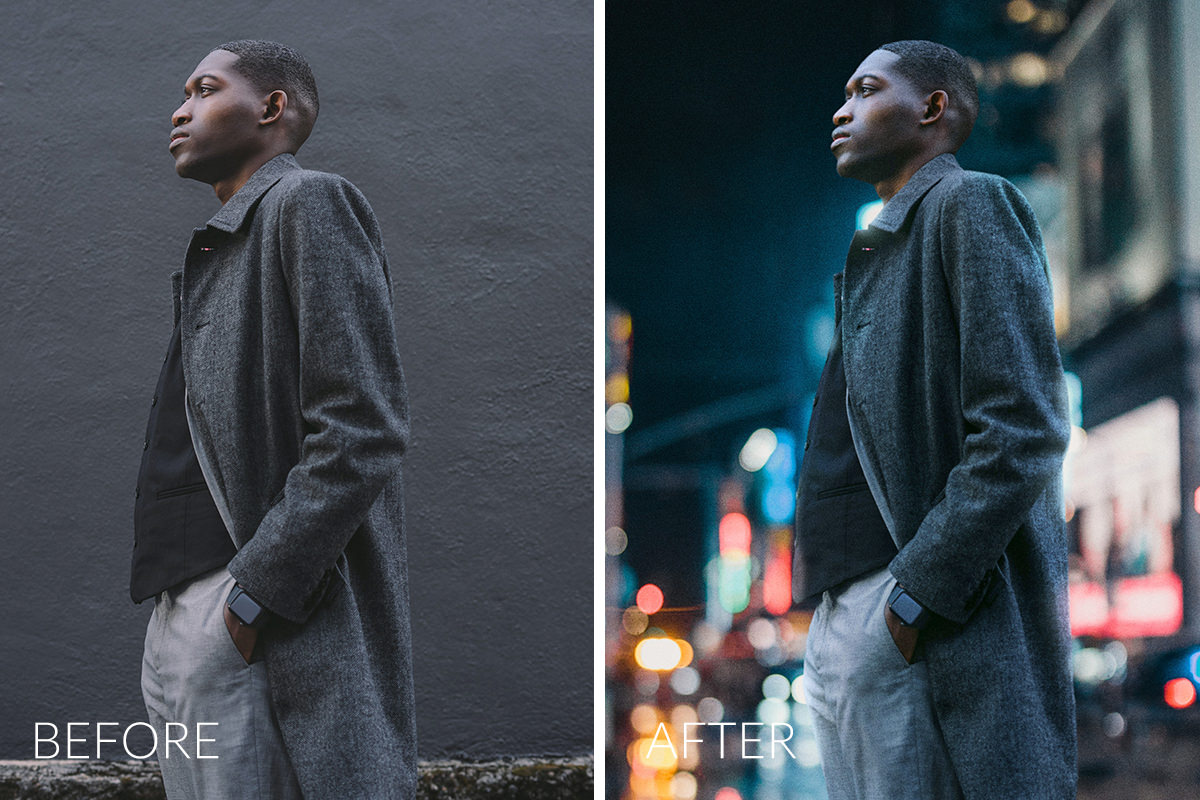To change the background in Photoshop, select the background layer then use the magic wand tool. Looking to enhance your photos with a different background?
Changing backgrounds in Photoshop is a powerful technique that can transform your images. Whether you want to replace a busy background with a solid color or add a new scene altogether, Photoshop offers a variety of tools to help you achieve the desired effect.
In this guide, we’ll explore how to change backgrounds in Photoshop using the magic wand tool. With a few simple steps, you can take your editing skills to the next level and create stunning visual compositions. Let’s dive in and learn how to master this essential Photoshop skill.

Credit: www.fotor.com
Choosing The Right Background
Choosing the right background is crucial when working with Photoshop. It can make or break the overall look and feel of your image. In this post, we’ll discuss how to Choose the Right Background in Photoshop to enhance your images effectively.
Selecting The Desired Background
When using Photoshop to change the background of an image, it’s important to start by selecting the desired background. This can be a solid color, a gradient, a pattern, or even another image. Consider the theme and purpose of your image to ensure the chosen background complements it effectively.
Considering The Image Compatibility
Before finalizing the background, it’s crucial to consider the compatibility of the background with the main image. Pay attention to the colors, lighting, and overall style to ensure a seamless blend. Understanding the visual elements of both the background and the main image is essential in achieving a cohesive and professional result.

Credit: phlearn.com
Removing The Current Background
Removing the Current Background:
Using The Magic Wand Tool
Click on the Magic Wand Tool icon in the toolbar. Adjust the tolerances for more precise selection. Click on the background to select it easily.
Using The Quick Selection Tool
Select the Quick Selection Tool in the toolbar. Adjust the brush size for accuracy. Drag the tool over the background to remove it effectively.
Preparing The New Background
Before changing the background, ensure you have a high-quality image. It should complement the main subject and have similar lighting and color tones.
Resize the background image to match your canvas size. Use Photoshop’s transform tools to adjust its position, scale, and orientation if needed.
Replacing The Background
Replacing the background of an image in Photoshop can completely transform its look and feel. Whether you want to add a new backdrop, remove distractions, or enhance the visual impact, mastering the art of background replacement is an essential skill for photographers and digital artists.
Using The Background Eraser Tool
The Background Eraser Tool in Photoshop allows you to quickly and precisely remove the background of an image. It is effective for images with well-defined subjects and clear distinctions between the foreground and background. When using this tool, adjust the brush size and hardness for targeted erasing, and modify the tolerance level to control the sensitivity of the eraser.
Using The Layer Mask
Utilizing a layer mask provides a non-destructive method for replacing the background. By painting on the mask with black or white, you can conceal or reveal specific areas of the image, effectively replacing the background while preserving the original image data. This approach allows for greater flexibility and fine-tuned control over the transition between the foreground and new background.
Refining The Edges
After replacing the background, refining the edges of the subject is crucial for achieving a seamless and natural-looking composition. With tools like the Refine Edge Brush or Select and Mask feature, you can smoothen out jagged edges, adjust the edge detection, and refine the overall appearance of the selection. Paying close attention to the edges ensures that the subject seamlessly integrates with the new background.
Fine-tuning And Finalizing
Now that you’ve successfully changed the background in Photoshop, it’s time to focus on the fine-tuning and finalizing of your image. This crucial step allows you to enhance the overall look and feel of your edited photo, ensuring that it seamlessly blends with its new background. In this section, we’ll explore three essential techniques that can elevate the quality of your image: adjusting levels and colors, adding shadows and highlights, and blending and merging elements together.
Adjusting Levels And Colors
One way to make your subject and new background visually cohesive is by adjusting the levels and colors of your image. This technique allows you to align the tones and hues, creating a harmonious blend. To do this:
- Open your image in Photoshop and navigate to the Image menu.
- Select Adjustments and then Levels.
- A levels adjustment window will appear, showcasing a histogram that represents the distribution of tones in your image. Drag the sliders to adjust the shadows, midtones, and highlights until you achieve the desired effect.
- Additionally, you can fine-tune the color balance by going to Adjustments and choosing Color Balance. Here, you can experiment with the sliders to enhance the overall color harmony of your image.
Adding Shadows And Highlights
Creating realistic shadows and highlights is another crucial step in making your edited image appear natural and believable. By adding depth and dimension, you can make your subject seamlessly blend with its new background. Here’s how to do it:
- Use the Pen Tool to trace the shape of the object where you want to add shadows or highlights.
- Once you’ve outlined the shape, right-click and choose Make Selection.
- Create a new layer and set the blending mode to Multiply for shadows or Screen for highlights.
- Select the appropriate color for shadows or highlights and use a soft brush to paint within the selection on the new layer.
- Adjust the opacity of the layer to achieve the desired intensity of the shadows or highlights.
Blending And Merging
Lastly, to ensure a seamless transition between your subject and the new background, you’ll need to blend and merge the elements together. This technique will help eliminate any hard edges or noticeable discrepancies. Here’s how to blend and merge effectively:
- Use the Lasso Tool or the Pen Tool to select the areas that require blending.
- Go to Edit and select Transform. You can choose from options such as Scale, Rotate, Skew, and Warp to adjust the selected areas.
- To ensure a smooth transition, right-click on the selection and choose Feather. A feather radius of 1-3 pixels is generally recommended for most images.
- Once you’re satisfied with the blending, merge the layers together by right-clicking and selecting Merge Layers.
With these final touches, you’ll beautifully refine your edited image, resulting in a seamless and professional-looking composition. Whether it’s adjusting levels and colors, adding shadows and highlights, or blending and merging elements together, paying attention to these details will help your subject and background appear as if they were always meant to be together.

Credit: www.pcmag.com
Frequently Asked Questions On Change Background Photoshop
How Do I Change The Background In Adobe Photoshop?
To change the background in Adobe Photoshop, follow these steps: select the Background Eraser tool, adjust the brush size, click and drag on the background to erase it, and add a new background layer or image. Finally, save your edited image.
How To Change The Background Of An Image?
To change the background of an image, use photo editing software like Photoshop or GIMP. Use the “magic wand” or “lasso” tool to select the background, then delete or replace it with a new one. Carefully adjust the edges for a seamless finish.
How Do I Change The Background Of A Selected Area In Photoshop?
To change the background of a selected area in Photoshop, use the selection tool to select the area. Then, go to the “Edit” menu, choose “Fill,” and select your desired background color or pattern.
How Do I Automatically Change The Background In Photoshop?
To automatically change the background in Photoshop, use the “Replace Background” feature in the software. Select the new background image, adjust settings, and let Photoshop do the work for you.
Conclusion
To sum up, changing the background in Photoshop can enhance your images creatively. Utilizing the right techniques and tools can help you achieve professional results. Experimentation and practice are key to mastering this skill. With access to numerous tutorials and resources, anyone can become proficient in this aspect of photo editing.
Start exploring and creating stunning visuals today!


